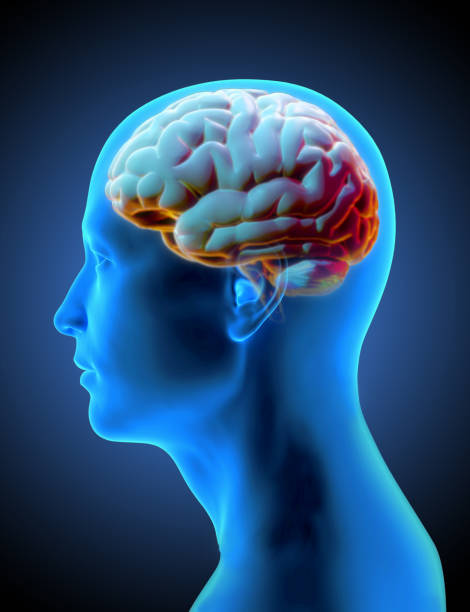Emotional intelligence—often called EQ (Emotional Quotient)—is one of the most discussed yet debated concepts in modern psychology. Popularized in the 1990s, it has been described as the ability to recognize, understand, and manage emotions—both our own and those of others. It is often praised as the secret ingredient behind success in leadership, relationships, and personal well-being. Yet, despite its widespread acceptance in popular culture, scientists continue to debate whether emotional intelligence is a real, measurable form of intelligence or simply a set of personality traits repackaged under a new label.
This article explores the origins of emotional intelligence, what science says about it, how it is measured, and whether it truly stands as a distinct and legitimate construct within psychology. The goal is to separate myth from evidence—to see what emotional intelligence really means and how it influences human behavior.
The Birth of a Psychological Idea
The roots of emotional intelligence can be traced back to early 20th-century attempts to define and measure intelligence. Traditional intelligence, or IQ, focused primarily on logical reasoning, problem-solving, and verbal and mathematical skills. However, psychologists soon realized that raw intellect alone did not account for success in life or relationships.
In the 1920s, psychologist Edward Thorndike introduced the idea of “social intelligence,” which he defined as the ability to understand and manage people. This was followed by David Wechsler, who included “non-intellective” abilities—such as motivation and emotional control—in his definition of intelligence. These early ideas planted the seeds for what would later be called emotional intelligence.
The modern concept of emotional intelligence emerged in the 1980s and 1990s through the work of several psychologists, notably Peter Salovey and John Mayer. They defined emotional intelligence as the ability to monitor one’s own and others’ feelings and emotions, to discriminate among them, and to use this information to guide one’s thinking and actions.
In 1995, science journalist Daniel Goleman popularized the concept with his book Emotional Intelligence: Why It Can Matter More Than IQ. Goleman’s version of emotional intelligence included not only emotional awareness but also motivation, empathy, and social skills. His work captured public attention and transformed emotional intelligence into a global buzzword—applied in education, business, and even politics.
What Emotional Intelligence Actually Means
At its core, emotional intelligence refers to the capacity to perceive, understand, regulate, and use emotions effectively. Emotions are not irrational forces to be suppressed; rather, they are signals that convey information about our needs, values, and social environments. Emotional intelligence is about reading those signals accurately and responding appropriately.
The most commonly accepted scientific model comes from Salovey and Mayer, who described emotional intelligence as a set of four interrelated abilities: perceiving emotions, using emotions to facilitate thought, understanding emotions, and managing emotions.
Perceiving emotions involves accurately recognizing feelings in oneself and others—through facial expressions, tone of voice, and body language. Using emotions to facilitate thought refers to harnessing feelings to guide reasoning, creativity, or decision-making. Understanding emotions means grasping how emotions evolve and interact, such as knowing that frustration can turn into anger or that guilt can motivate change. Managing emotions involves regulating one’s emotional responses and influencing those of others in healthy ways.
This model treats emotional intelligence as a genuine cognitive ability, similar to other forms of intelligence, and assumes it can be measured through performance-based tests.
Emotional Intelligence vs. Personality and IQ
One of the central questions in the scientific debate is whether emotional intelligence is truly distinct from personality traits or traditional intelligence. Some critics argue that emotional intelligence merely overlaps with known dimensions of personality, such as agreeableness, conscientiousness, and extraversion, or with social skills.
However, research suggests that emotional intelligence does capture something unique, although it is partly related to both IQ and personality. For example, a person can have a high IQ but low emotional intelligence—meaning they may excel at solving problems but struggle with interpersonal relationships or emotional regulation. Conversely, someone with average cognitive intelligence may have high emotional intelligence and succeed in leadership, empathy, and conflict resolution.
Emotional intelligence bridges the gap between the cognitive and emotional domains of human functioning. It combines elements of reasoning with affective awareness, offering a more holistic picture of what it means to be “intelligent” in real life.
Measuring Emotional Intelligence
One of the challenges of establishing emotional intelligence as a scientific concept lies in measuring it reliably. Unlike IQ, which can be assessed through standardized tests, emotional intelligence involves complex and context-dependent behaviors.
Two main approaches have emerged: the ability model and the trait model.
The ability model, developed by Mayer, Salovey, and Caruso, treats emotional intelligence as a form of cognitive ability. Their test, the Mayer-Salovey-Caruso Emotional Intelligence Test (MSCEIT), measures how well individuals can identify emotions in faces, understand emotional meanings, and solve emotional problems. Test-takers are asked to select emotions that best describe a picture or determine how emotions change in certain situations.
The trait model, championed by researchers like Konstantinos Petrides, views emotional intelligence as a constellation of self-perceptions and emotional dispositions. It is assessed through self-report questionnaires such as the Trait Emotional Intelligence Questionnaire (TEIQue). These tests measure how people perceive their own emotional abilities rather than their objective performance.
Both approaches have strengths and weaknesses. Ability-based tests are more objective but can be limited by their reliance on consensus scoring—since there are no universally correct answers to emotional questions. Trait-based tests are easier to administer and correlate with real-world outcomes but are subject to self-report biases.
The Neuroscience of Emotional Intelligence
Neuroscientific research has provided valuable insights into the biological basis of emotional intelligence. Emotions are regulated by a complex interplay between brain regions, including the amygdala, prefrontal cortex, and anterior cingulate cortex.
The amygdala plays a central role in detecting emotionally significant stimuli, such as threats or rewards. It acts as an alarm system, triggering physiological responses like fear or excitement. However, emotional intelligence involves not just emotional reactivity but also emotional regulation. The prefrontal cortex, located behind the forehead, helps modulate emotional responses by integrating cognitive control and decision-making.
Individuals with higher emotional intelligence tend to show stronger connectivity between these brain regions. They are better able to balance emotional impulses with rational thought, a function that depends on neural communication between the amygdala and prefrontal cortex.
Studies using functional MRI (fMRI) have shown that people who score high on measures of emotional awareness and empathy exhibit greater activation in the insula and medial prefrontal cortex—areas involved in self-awareness and perspective-taking. This suggests that emotional intelligence has identifiable neural correlates, supporting its status as a genuine psychological construct rather than a vague personality trait.
Emotional Intelligence in Everyday Life
The practical relevance of emotional intelligence lies in its application across personal, social, and professional contexts. People with high emotional intelligence are typically better at managing stress, resolving conflicts, and communicating effectively. They are often described as more empathetic, resilient, and socially adept.
In the workplace, emotional intelligence has been linked to leadership effectiveness, teamwork, and job satisfaction. Leaders with high emotional intelligence are better at inspiring trust, motivating others, and managing organizational change. They can read the emotional climate of a group and respond in ways that enhance cooperation and performance.
In education, emotional intelligence contributes to academic success, not by increasing cognitive ability but by improving emotional regulation and motivation. Students with higher emotional intelligence tend to have better relationships with teachers and peers, experience less anxiety, and cope more effectively with setbacks.
In personal relationships, emotional intelligence fosters empathy, compassion, and communication. It allows individuals to recognize their partner’s emotional needs, manage disagreements constructively, and build deeper emotional connections.
Emotional Intelligence and Mental Health
A growing body of evidence suggests that emotional intelligence plays an important role in psychological well-being. It acts as a buffer against stress, depression, and anxiety by helping individuals regulate their emotional responses and maintain positive relationships.
People with high emotional intelligence tend to use adaptive coping strategies, such as problem-solving and cognitive reframing, rather than avoidance or aggression. They are better at recognizing early signs of emotional distress and seeking support when needed.
Low emotional intelligence, on the other hand, is associated with emotional dysregulation, impulsivity, and difficulties in interpersonal communication. It can contribute to chronic stress, burnout, and even substance abuse. Developing emotional intelligence skills—such as mindfulness, empathy, and self-reflection—has been shown to improve mental health outcomes and overall life satisfaction.
Emotional Intelligence in Children and Education
The concept of emotional intelligence has found strong support in educational psychology. Emotional and social learning programs are now implemented in schools worldwide to help children develop self-awareness, emotional regulation, and empathy.
Research indicates that children who learn emotional skills early in life perform better academically, exhibit fewer behavioral problems, and show greater emotional resilience. Programs like Social and Emotional Learning (SEL) integrate emotional education into the curriculum, teaching students how to identify feelings, resolve conflicts, and manage stress.
These findings challenge the traditional view that intelligence is purely cognitive. Instead, they support a broader understanding of intelligence as encompassing emotional, social, and moral dimensions—all of which are essential for human development.
Emotional Intelligence in the Workplace
In corporate psychology and organizational behavior, emotional intelligence has become a cornerstone of leadership development. Studies show that leaders with high emotional intelligence create more positive work environments, experience lower employee turnover, and achieve higher levels of team engagement.
This is not surprising, since leadership is fundamentally an emotional process. It involves motivating others, managing conflict, and fostering trust—all of which require the ability to understand and regulate emotions. Emotional intelligence also predicts performance in roles that demand high interpersonal interaction, such as sales, management, and customer service.
However, some critics argue that the business world has overstated the importance of emotional intelligence, treating it as a cure-all for workplace problems. While emotional intelligence enhances interpersonal effectiveness, it cannot replace technical skill, ethical behavior, or strategic vision. A balance of IQ, EQ, and experience remains essential for sustained success.
Cultural Perspectives on Emotional Intelligence
Emotions are universal, but the ways in which they are expressed and interpreted vary across cultures. This raises an important question: is emotional intelligence a universal construct, or is it culturally specific?
Cross-cultural research indicates that while the core components of emotional intelligence—such as empathy and emotion regulation—exist across societies, the norms governing emotional expression differ. In some cultures, open emotional expression is valued, while in others, emotional restraint is considered a virtue.
For example, in collectivist societies such as Japan or China, emotional intelligence may involve maintaining harmony and showing sensitivity to group dynamics. In more individualistic cultures, like the United States, it may emphasize assertiveness and emotional authenticity. Understanding these cultural nuances is crucial for interpreting emotional intelligence in a global context.
The Criticisms and Controversies
Despite its popularity, emotional intelligence has faced substantial criticism from psychologists. Some argue that the concept is too broad and vague to be scientifically meaningful. The overlap between emotional intelligence and personality traits—such as empathy, agreeableness, and emotional stability—makes it difficult to determine whether emotional intelligence is truly distinct.
Others question the validity of emotional intelligence tests. Self-report questionnaires, in particular, may reflect how people want to see themselves rather than their actual abilities. Furthermore, some critics argue that emotional intelligence has been overhyped as being more important than IQ, when in reality both forms of intelligence contribute in different ways.
Another concern is that emotional intelligence can be used manipulatively. Individuals who are skilled at reading emotions may exploit others’ feelings for personal gain. Therefore, emotional intelligence must be guided by ethical principles and empathy, not manipulation.
Despite these criticisms, the scientific community largely agrees that emotional intelligence represents a meaningful domain of psychological functioning, though it continues to refine its definition and measurement.
The Evidence from Meta-Analyses
To evaluate the scientific validity of emotional intelligence, researchers have conducted meta-analyses—large-scale statistical studies that synthesize findings across hundreds of individual studies.
A 2009 meta-analysis published in Journal of Applied Psychology found that emotional intelligence, particularly ability-based EI, predicted job performance above and beyond IQ and personality. Another review published in Personality and Individual Differences (2011) showed that higher emotional intelligence correlated with better mental health, relationship satisfaction, and academic achievement.
While these correlations do not prove causation, they provide robust evidence that emotional intelligence plays a measurable role in real-world outcomes. Moreover, the effects of emotional intelligence tend to be stronger in professions requiring emotional labor—such as teaching, healthcare, and management—where understanding and managing emotions are central to success.
Can Emotional Intelligence Be Improved?
One of the most encouraging findings from research is that emotional intelligence is not fixed. Unlike IQ, which remains relatively stable across the lifespan, emotional intelligence can be developed through learning and practice.
Interventions such as mindfulness training, empathy exercises, and emotional regulation techniques have been shown to increase emotional awareness and control. Cognitive-behavioral therapy (CBT) also incorporates elements of emotional intelligence by teaching individuals to identify and reframe negative emotional patterns.
In organizational settings, emotional intelligence training programs focus on self-awareness, active listening, and conflict resolution. While not all programs are equally effective, those grounded in psychological theory and behavioral practice show consistent improvements in emotional competence and interpersonal functioning.
Emotional Intelligence and Artificial Intelligence
In recent years, the concept of emotional intelligence has found relevance in an unexpected domain—artificial intelligence (AI). As machines become more advanced, researchers are exploring how to create systems that can recognize and respond to human emotions.
Emotionally intelligent AI, also known as affective computing, aims to enhance human-computer interaction by enabling machines to detect emotional cues such as facial expressions, voice tone, and physiological signals. This has applications in mental health support, education, and customer service.
However, while AI can simulate emotional understanding, it lacks true emotional experience. Emotional intelligence, in its deepest sense, requires consciousness, empathy, and moral awareness—qualities that remain uniquely human.
The Future of Emotional Intelligence Research
The future of emotional intelligence research lies in refining its measurement, integrating it with neuroscience, and understanding its developmental pathways. Researchers are examining how emotional intelligence evolves over the lifespan, how it interacts with genetic and environmental factors, and how it influences social and moral behavior.
Advances in brain imaging, computational modeling, and psychometrics will continue to clarify the mechanisms underlying emotional intelligence. The challenge will be to maintain scientific rigor while applying the concept to real-world issues such as education, leadership, and mental health.
Conclusion
Emotional intelligence is not a myth, nor is it a magic formula for success. It is a scientifically grounded concept that captures essential aspects of human functioning—our ability to understand, express, and regulate emotions in ourselves and others.
While debate continues over how best to define and measure it, the evidence is clear that emotional intelligence influences mental health, relationships, education, and professional performance. It bridges the gap between intellect and emotion, showing that true intelligence is not merely about logic but also about empathy, awareness, and self-control.
In a world where technology and information dominate, emotional intelligence remains one of the most human forms of wisdom. It is the capacity to feel deeply, think clearly, and act compassionately. Whether in personal growth or social progress, emotional intelligence continues to reveal that understanding our emotions—and those of others—is not just a skill, but a form of intelligence that defines our humanity.






